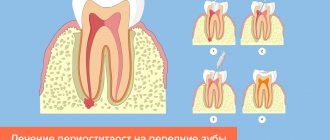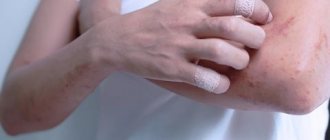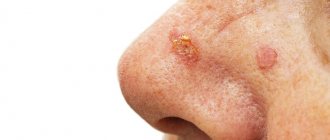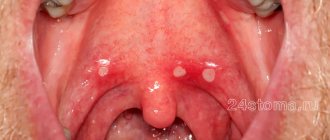Reasons for appearance
The exact causes of the disease have not yet been established. The main one is regular exposure to ultraviolet radiation. It affects the dermis, epidermal layers, blood vessels, sebaceous glands, and melonocytes.
Gradually, under the influence of sunlight, the disturbances increase, reaching the peak of the disease.
The following factors contribute to the development of pathology:
- genetic predisposition;
- weakened immune system;
- influence on the skin of chemicals (resinous substances, oil, sand, etc.);
- past infections;
- age-related changes (the disease most often affects people over 50 years of age).
Due to weak immunity, AIDS carriers, people with problems with the nervous and endocrine systems, as well as patients who have undergone chemotherapy or complex operations are more prone to the appearance of keratosis.
Some types of keratoses often affect young people. This usually applies to red-haired or fair-haired people with gray, blue or green eyes. Research shows that by the age of 40, 60% of the population has at least one element of keratosis.
Over the age of 80, everyone has some type of this pathology.
Why does foot hyperkeratosis occur?
The main reason is the disruption of keratin synthesis. Pathological enlargement and keratinization of the upper layer of the skin of the feet can occur for several reasons. Among them are external factors - wearing shoes that are tight and uncomfortable, or, on the contrary, shoes that are too big and loose, as well as being tall or overweight.
Because of this, the load on different parts of the foot becomes uneven; in places of strong pressure, blood circulation is disrupted, which leads to disruption of the process of cell division. Congenital or acquired foot deformities can also lead to hyperkeratosis.
Another range of causes for the development of pathology are dermatological skin diseases or metabolic disorders. In patients with diabetes mellitus, pain and tactile sensitivity worsens, due to poor circulation, the skin dries out, and ulcerative defects appear.
Among skin diseases, the cause of hyperkeratosis can be psoriasis, keratoderma, and ichthyosis. At the same time, the combination of external and internal factors leads to more serious consequences.
Types and signs of keratosis
A person may not pay attention to the signs of the initial stage of the disease. It can manifest itself as unnoticeable roughness on any part of the body (cheeks, bridge of the nose, forearms, scalp, ears, etc.). At first the formation is solid, small in size, red or brown in color. The skin around the affected area may peel off, itching begins, and hair loss may also be observed at the site of the keratoma.
There is no unified classification of the varieties of this disease, because it has not been fully studied. According to etiology, the following types of keratosis are distinguished:
- Congenital - appears at birth or at a younger age. Very rare.
- Acquired - appears in adulthood, less often - in adolescence.
- Symptomatic – occurs due to external factors.
According to the affected area, local (single areas of skin are affected) and diffuse (large areas of the skin are affected) keratosis.
There are also several types of clinical manifestations.
Keratosis follicularis
The formation of horny plugs in the hair follicles is observed. These are dead cells that have separated from the skin. By forming nodules, they interfere with hair growth. Most often, keratosis pilaris appears on the abdomen, face, shoulders, buttocks, neck, and armpits. Such manifestations are characteristic of the cold season; closer to summer, symptoms may disappear. This type of pathology is also called pilar keratosis. If the nodule grows more than 3 mm, pain may occur.
Consumption of allergens can cause an exacerbation of the inflammatory process.
Seborrheic keratosis
This type of disease is characterized by plaque-like or nodular formations with a warty surface. The top of the keratomas is covered with a brown or black keratinized substance. As a rule, it occurs over the age of 50 years, therefore it is also called actinic keratosis.
The most common areas for the appearance of formations are the face, chest, neck, etc. It does not occur on the palms and soles. The development of this form of the disease proceeds slowly and usually becomes chronic. Actinic keratosis does not develop into a cancerous tumor, but a malignant tumor can masquerade as keratosis. In case of inflammation of the affected areas, bleeding and rapid growth of the formation, you should immediately consult a doctor.
Actinic keratosis
Appears on exposed areas of the body. At first it looks like uneven, rough skin. Over time, it develops into a scaly, flaky, compacted spot, ranging in color from skin color to brownish. Such formations may look like growths, rising above the skin. Mostly the face, neck, and chest are affected by keratinization. Such keratosis can transform into cancerous tumors, so it is necessary to be regularly monitored by a dermatologist.
Symptoms
Symptoms of keratosis can vary, as they depend on the specific type of disease. With keratosis pilaris, bumps form on the surface of the skin near the hairs. In color they can match the skin tone or be lighter, and in some cases dark or pinkish bumps appear. As a rule, such peculiar rashes do not cause any discomfort, but under some circumstances they can become inflamed, red, or increase in size. Seborrheic keratoses appear as patches of thickened skin that are beige, light brown, or almost black. To the touch they are slightly convex, hard and rough. There is no discomfort either, but such manifestations are unpleasant from an aesthetic point of view. With actinic keratosis, small, defined spots appear with a dry, sandpaper-like surface. On such spots you can find scales, after removing which the skin is damaged and blood appears. Sometimes the lesions expand and merge into larger ones, forming entire surfaces. Unpleasant and painful sensations may occur: itching, tightness, burning.
Treatment of the disease
Treatment should be carried out by a dermatologist.
You need to visit a specialist after the first appearance of keratomas, since it is important to exclude the malignant nature of the formation. Treatment is long-term and complex, usually including a number of activities.
Conservative therapy
It is carried out with the aim of reducing the number of keratoses before moving on to radical methods of treatment.
Therapeutic agents reduce symptoms and alleviate the course of the disease, but do not cure completely.
Therapeutic agents reduce symptoms and alleviate the course of the disease, but do not cure completely.
To soften keratonic areas, applications using drugs with urea (content - from 12 to 30%) are used: Keratosan, Ureaderm, Ureatop, Akerat..
The following drugs are used in therapeutic treatment: Fluorouracil, Efudex cream, Diclofenac Gel 3%, Imiquimod. Special shampoos are used to treat keratosis of the scalp. Retinoids are taken internally, which help reduce the growth rate of formations, as well as vitamins of groups A, B and C. Additionally, courses of physiotherapy are prescribed.
Radical methods of treating keratosis
Since conservative therapy for keratosis does not guarantee complete cure, it is often necessary to proceed to radical measures - direct removal of the formations. The use of drastic techniques is especially justified if there is a risk of keratosis degenerating into cancer.
The following radical methods of therapy exist:
- Cryodestruction - freezing with liquid nitrogen.
- Radio wave removal. The formation is excised using a radio knife under the influence of radio waves.
- Electrocoagulation - the doctor performs cauterization using high-frequency electric current.
- Laser destruction - a targeted effect of a carbon dioxide laser is applied to the keratoma.
- Photodynamic therapy - methyl aminolevulinate is applied to the affected area with further exposure to a light wave of a certain length. All this leads to necrosis of the affected tissues.
- Surgical removal - the skin is scraped with a curette (special instrument).
- Dermabrasion – removal using an abrasive brush.
Are there any new developments in this direction on the world market?
Well, for example, from 1998 to the present, the Australian biopharmaceutical company Peplin has been studying the topical treatment of actinic keratosis with the drug Ingenol Mebutate, which is the first in a new class of formulations and is derived from milkweed juice. This ingredient has a long history of traditional use for a variety of skin conditions, including the topical treatment of skin cancer and precancerous skin lesions. The company plans to enter the third phase of the trial soon.
Forecast and prevention of the disease
The prognosis of the disease depends on the time of initiation of treatment. However, in order to avoid relapses, it is necessary to follow certain recommendations.
The following measures can be taken as prevention:
- use moisturizing creams;
- eat well so that food provides the skin with all the necessary “building” elements;
- limit exposure to direct sunlight to reduce exposure to ultraviolet radiation;
- when in the sun, use sunscreens (ointments and creams) with a high SPF level;
- When working with chemicals, you must use appropriate skin protection.
Keratosis is a skin condition that requires constant monitoring. In addition to an aesthetic defect, sometimes formations can develop into malignant tumors. And to prevent this, it is necessary to undergo regular examinations and monitor changes in the skin.
Table of contents
- Etiology and pathogenesis
- Clinical features
- Principles of treatment
Keratosis (actinic keratosis, solar keratosis, actinic keratosis, actinic keratosis) is a precancerous skin condition that occurs as a result of a person’s prolonged exposure to the open sun.
In our company you can purchase the following equipment for the treatment of keratosis:
- M22 (Lumenis)
- Fraxel (Solta Medical)
- AcuPulse (Lumenis)
- UltraPulse (Lumenis)
Most often, actinic keratosis of the skin occurs in older people, but recently there has been a trend towards rejuvenation of this disease. According to statistics, the more time a person has spent in the open sun during his life and the more sunburns he has received, the higher the risk of developing keratoses as he ages.
Although a significant number of cases of squamous cell carcinoma are associated with actinic keratoses, the risk of the latter progressing to skin cancer is relatively low. Unfortunately, at present, no reliable histological criteria have been developed that could accurately predict which cases of actinic keratosis transform into skin cancer and which do not. According to various estimates, the probability of this event is in the range of 0.025–20%.










